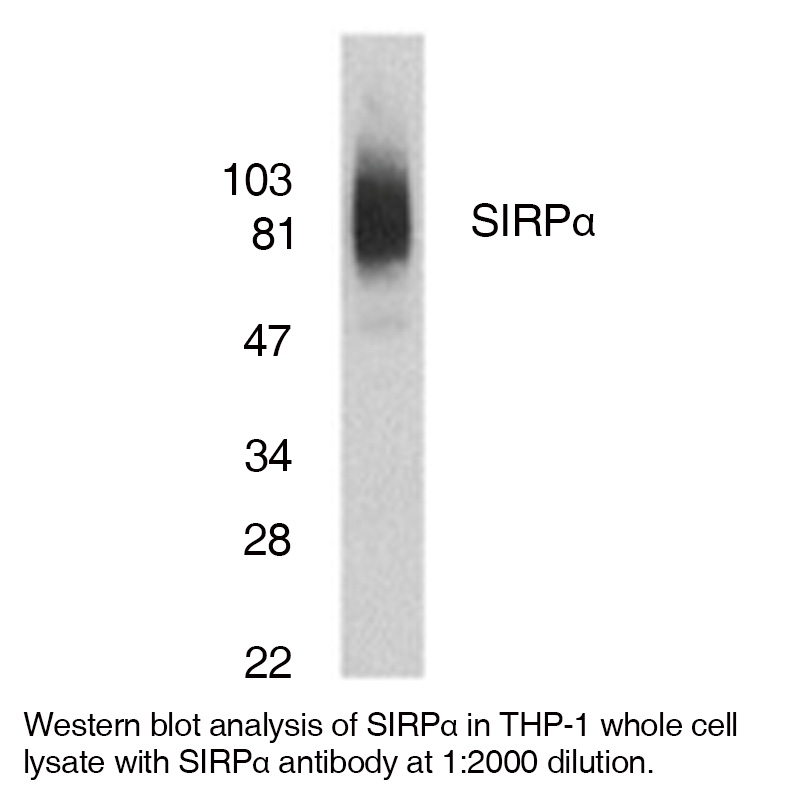Anti-Human SIRPα (CT)
| Code | Size | Price |
|---|
| LEI-S487-20ug | 20 ug | £199.00 |
Quantity:
| LEI-S487-0.1mg | 0.1 mg | £591.00 |
Quantity:
Prices exclude any Taxes / VAT
Overview
Host Type: Rabbit
Antibody Clonality: Polyclonal
Regulatory Status: RUO
Target Species: Human
Applications:
- Immunohistochemistry- Paraffin Embedded (IHC-P)
- Western Blot (WB)
Shipping:
Ambient
Storage:
This polyclonal antibody is stable for at least one week when stored at 2-8°C. For long term storage aliquot in working volumes without diluting and store at -20°C in a manual defrost freezer. Avoid Repeated Freeze Thaw Cycles.
Images
Further Information
Concentration:
0.5 mg/ml
Conjugate/Tag/Label:
Purified No Carrier Protein
Format:
This polyclonal antibody is formulated in phosphate buffered saline (PBS) pH 7.4 containing 0.02% sodium azide as a preservative.
Formulation:
This polyclonal antibody is formulated in phosphate buffered saline (PBS) pH 7.4 containing 0.02% sodium azide as a preservative.
Immunogen:
PN:S529
Long Description:
Protein tyrosine phosphatases (PTPases) SHP-1 and SHP-2 are critical regulators in the intracellular signaling pathways that result in cell responses such as mitosis, differentiation, migration, survival, transformation or death. SHP-2 is a signal transducer for several receptor tyrosine kinases and cytokine receptors. A novel SHP-2 associated glycoprotein was recently cloned from human, rat, mouse and cattle by several labs and was designated SIRPα, SHPS-1, MyD-1, BIT and p84. SIRPα is a new gene family containing at least fifteen members. SIRPα is a substrate of many activated tyrosine kinases such as insulin receptor, EGFR, PDGFR and src, and a specific docking protein for SHP-2. SIRPα has regulatory effects on cellular responses induced by serum, growth factors, insulin, oncogenes, growth hormones and cell adhesion and plays a general role in different physiological and pathological processes.
Target:
SIRP alpha
References
1. Kharitonenkov, A. et al. (1997) Nature 386:181 2. Fujioka, Y. et al. (1996) Mol. Cell Biol. 16:6887 3. Yamao, T. et al. (1997) Biochem. Biophys. Res. Commun. 231:61 4. Brooke, GP. et al. (1998) Eur. J. Immunol. 28:1



